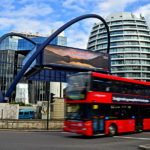 Living in a city could be shaping how you unconsciously see race, making you more biased or less so. It all depends on how many people are around, how diverse the place is, and how segregated it feels. A new study from the Santa Fe Institute, mixing city math with individual psychology, gives us the lowdown.
Living in a city could be shaping how you unconsciously see race, making you more biased or less so. It all depends on how many people are around, how diverse the place is, and how segregated it feels. A new study from the Santa Fe Institute, mixing city math with individual psychology, gives us the lowdown.
The study uses data and math to explain why some cities have more of this sneaky, or implicit, racial bias than others. The hope is that local communities and governments can use these findings to make cities fairer and more equal.
Informal connections
In cities, we’re always bumping into lots of different people, creating a web of social connections. Because of all these interactions, we’re always adapting and learning.
To figure out how racial biases emerge in U.S. cities, the researchers looked at a big dataset from the Implicit Association Test (IAT). In this online test, volunteers match White or Black faces with positive or negative words. How fast they do this shows if they have a bias – like preferring White over Black or the other way around. Understanding this connection helps us create cities where people treat each other more fairly.
“People may feel they are not prejudiced, but can unconsciously have a preference for one group or another, and this is revealed by these tests,” the researchers explain.
Connecting the dots
The scientists gathered average IAT bias scores from around 2.7 million people in different places. They connected these scores with racial and population data from the U.S. Census, creating a model to understand how individuals pick up biases through their social networks. What they discovered is that in cities where networks are bigger, more diverse, and less separated, implicit racial biases go down.
The findings point to certain factors in cities that either make people less biased or more so. One major factor is how racial groups live in separate neighborhoods. Also, the absence of open, diverse public spaces where people from different backgrounds can have positive interactions plays a role.
In cities where folks can’t meet and engage with others from different groups, racial biases become big obstacles to fairness. These obstacles show up in various parts of life, like medical care, education, jobs, policing, mental health, and physical well-being, creating disparities, as the researchers explain.